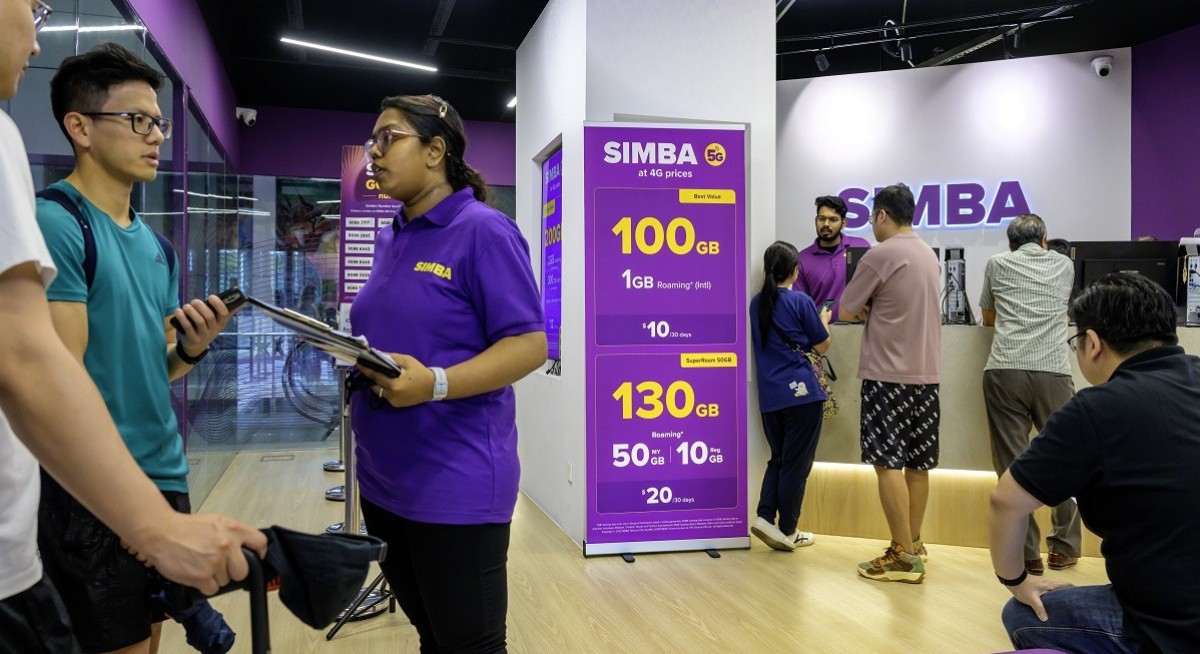The Dropbox of that era was a company called Seagate. It was the king of the 14-inch disk drives. In the mid-1980s, Seagate held the disk market with a vice-like grip.
They were suddenly dislodged by producers of cheaper 8-inch drives. These were niftier and cheaper. They had less capacity, but were easier to carry around.
Only teenagers and stingy eccentrics used them. Seagate dismissed the new format as low-quality toys. These toys powered a booming minicomputer segment.
The incumbent was too slow to pivot. By the time Seagate peers took notice, it was too late. The game had changed. The new kids on the block controlled the future.
See also: Investors may want to keep an eye on cable
This story should be familiar. Simba, once a fringe player, is poised to become the nation’s largest mobile operator.
Simba’s rise is not the story of a roaring success. It is a patient insurgency. It was originally known as TPG Singapore. The company entered the market in 2016 as the fourth mobile operator. It challenged the trio of Singtel, StarHub and M1.
The incumbents dismissed Simba’s $10 per month SIM-only plan as a niche play for budget hunters. Simba’s share barely registered. It hovered under 5%. It quietly built a lean and software-driven network.
See also: Singtel taps Airtel cash machine; sells 0.8% of stake for $1.5 bil
Like 8-inch disks, the customers were a niche segment. They were migrant workers and students. Data-heavy users underserved by legacy plans also sign up with Simba.
StarHub, M1 and SingTel were busy polishing premium bundles. It included triple-play fibre packages, handset subsidies and loyalty perks. Simba stays focused on core mobile connectivity at rock-bottom rates.
The inflexion point came in 2023–2024. Singapore’s telecom market was saturated. The handset upgrade cycles slowed. Consumers wanted to cut costs. Simba doubled down on aggressive SIM-only offers. You could get 20GB for under $10. It deployed its 4G and upgraded to 5G as well. It did not have the legacy of older network architecture.
Simba’s marketing was simple. There were no celebrity endorsements by movie stars. There were no networks of retail stores in the malls paying expensive rent. Sports sponsorship was avoided.
Instead, it ran a lean social media campaign. It invested in network coverage and made switching frictionless. Changing your operator could take minutes. Onboarding could be done on the app.
By early 2025, Simba’s subscriber base had leapfrogged to over 2.5 million. It crossed StarHub and is closing in on market leader Singtel’s consumer mobile numbers. The market share was estimated at 28% to 30%, up from under 10% just three years prior.
The original three operators were focusing on ARPU (average revenue per user). They had forgotten about absolute subscriber numbers. They bundled TV, broadband and handset financing into packages. These had high monthly commitments.
Sink your teeth into in-depth insights from our contributors, and dive into financial and economic trends
My household pays over $250 a month for a bundled package from one of the three. Ours is not the only household that has been alienated.
Simba’s economics allowed it to thrive at lower ARPU levels. It did not have costly retail footprints. There are no legacy system integration headaches. Despite the low price plans, its cost-to-serve per customer was much lower.
With steadily growing revenue, it turned profitable for the half year ended Jan 31, with a net profit of $3 million, versus a loss of $3.5 million in the year earlier.
Simba’s rise wasn’t just about low prices and subscriber growth. It reinvested its savings. It now has a comparable network at a lower cost.
This week saw the final act in Simba’s rise. It pounced on M1, which had a 12% market share. It gives Simba a retail footprint in malls. It combines M1’s physical presence with its own lean cost model.
Simba has now vaulted from insurgent to full-spectrum competitor. It is now the apex predator of Singapore’s mobile.
Simba’s success could inspire others. You do not need to visit a bank or brokerage to invest. There are apps which make it easy to do so. They still have a minuscule market share. The banks still dominate the field.
These insurgents could eclipse the banks. Investors need to be nimble. There are other Simbas lurking in Singapore.
Nirgunan Tiruchelvam is head of consumer and internet at Aletheia Capital and author of Investing in the Covid Era




